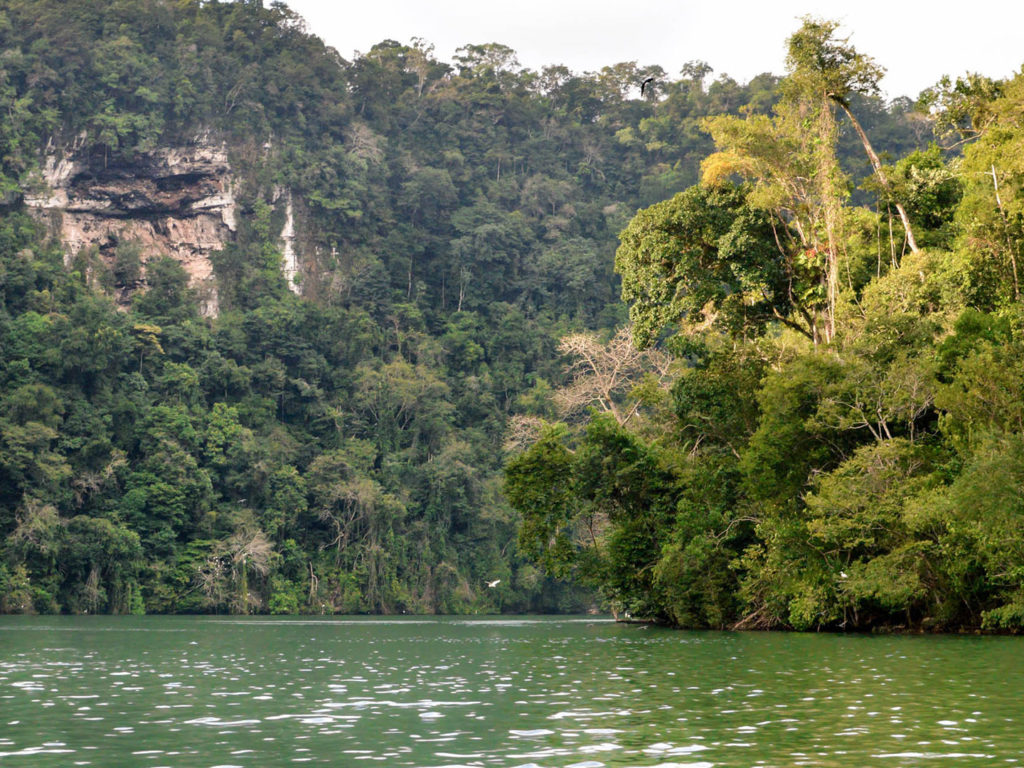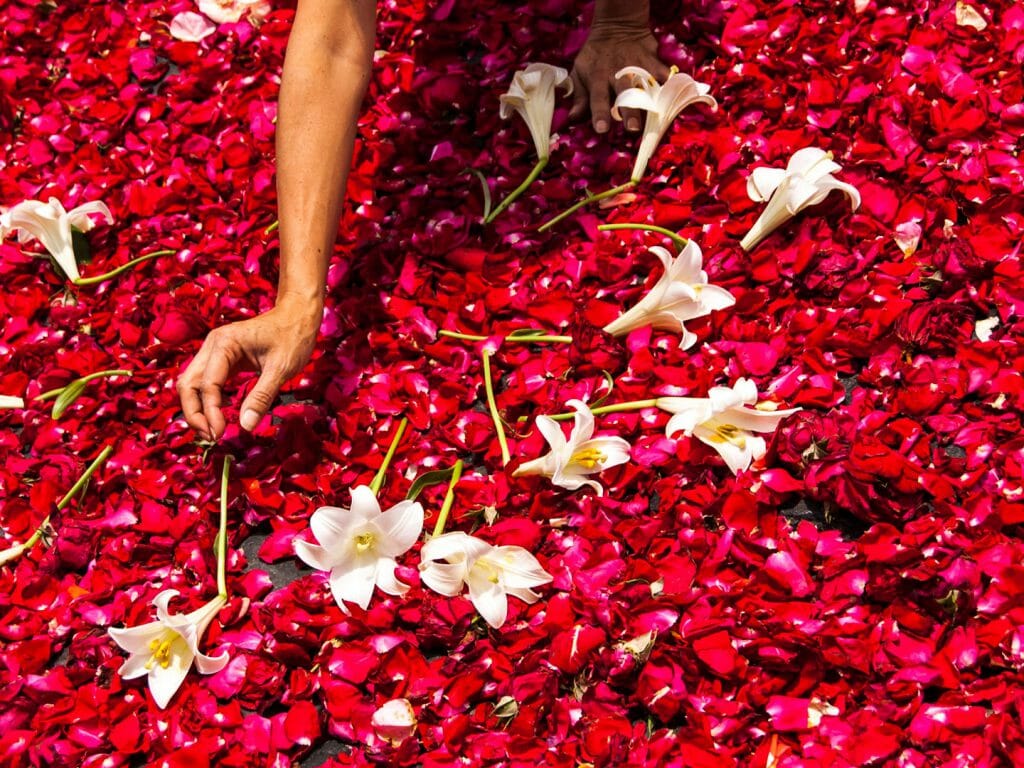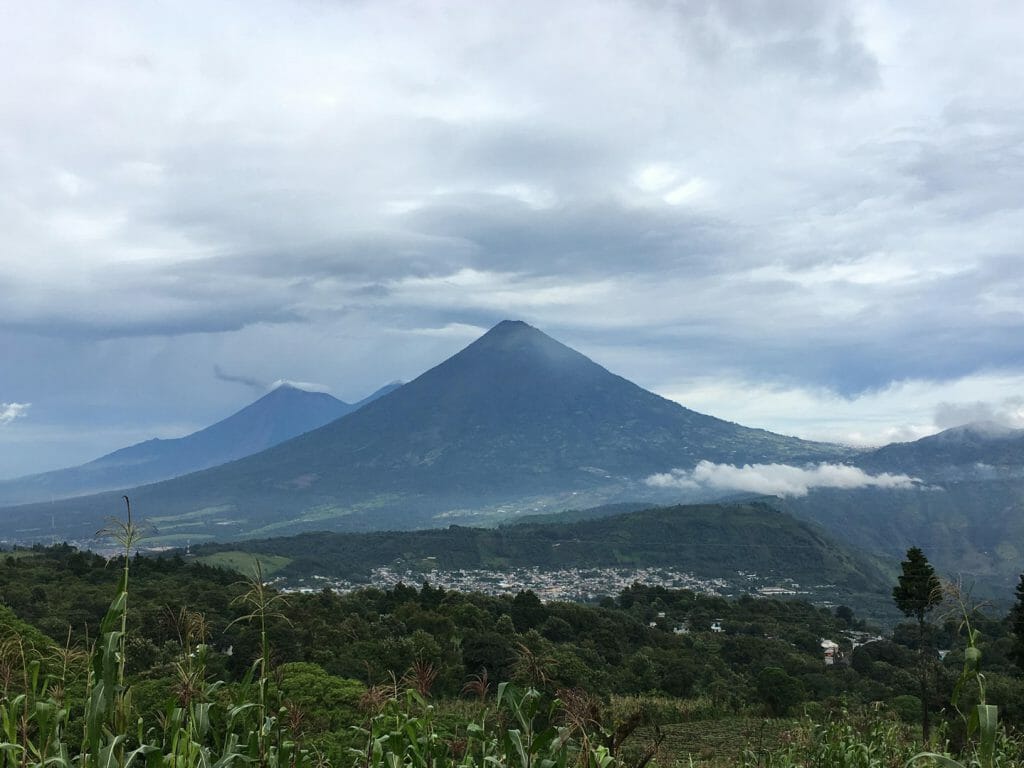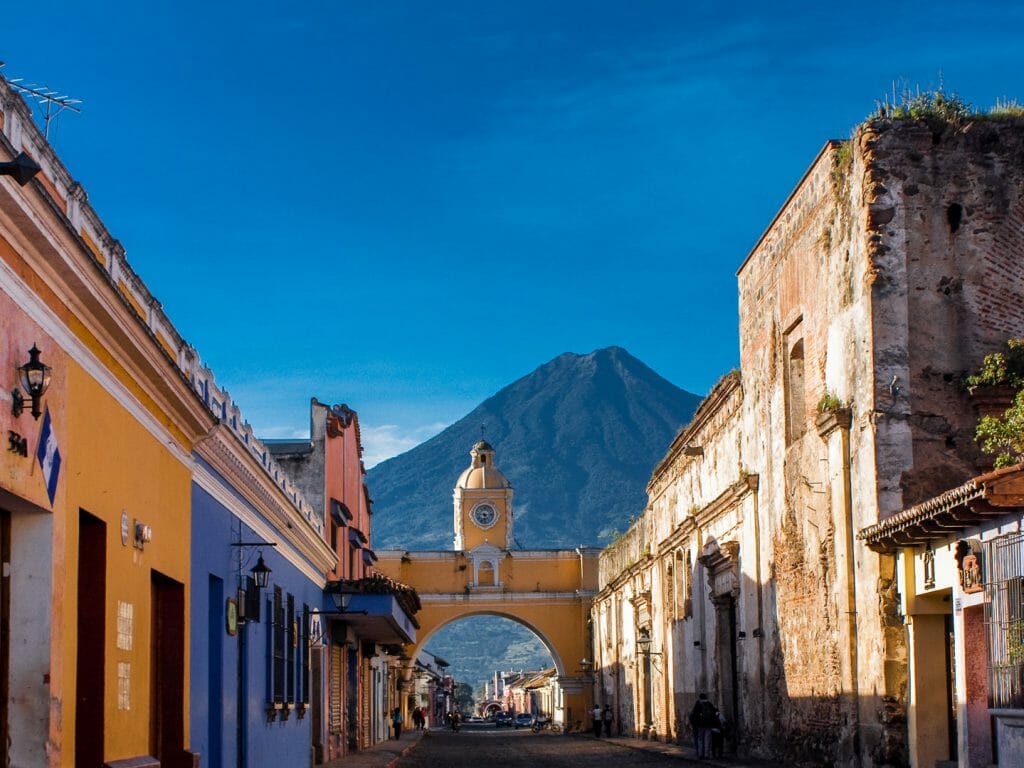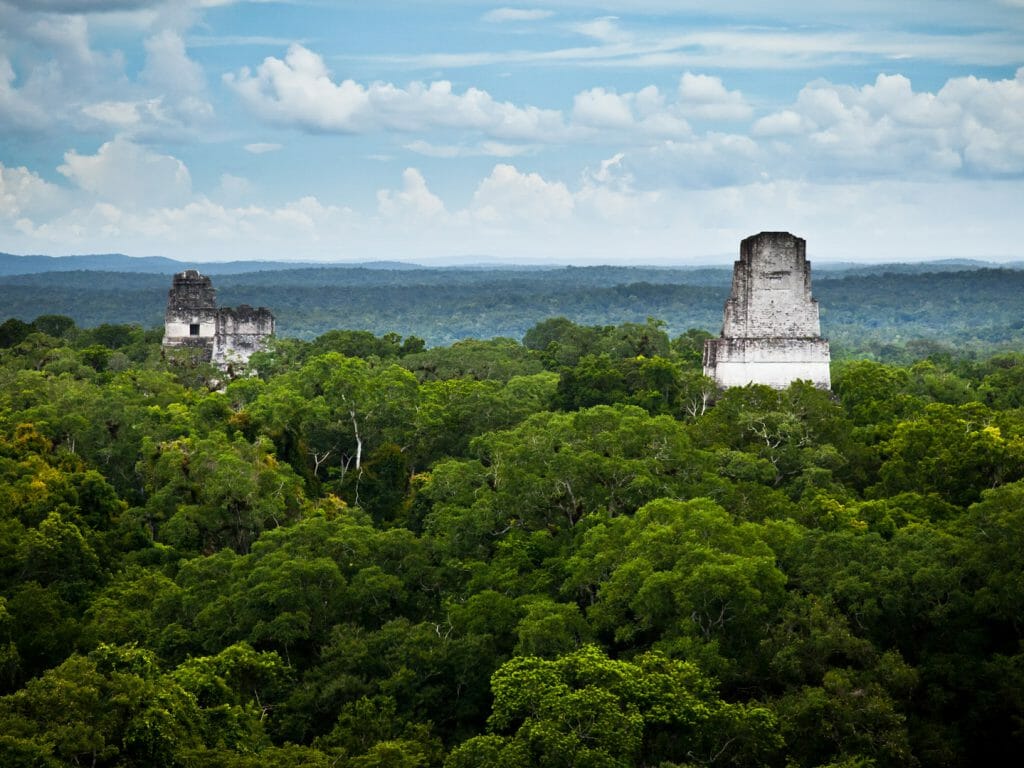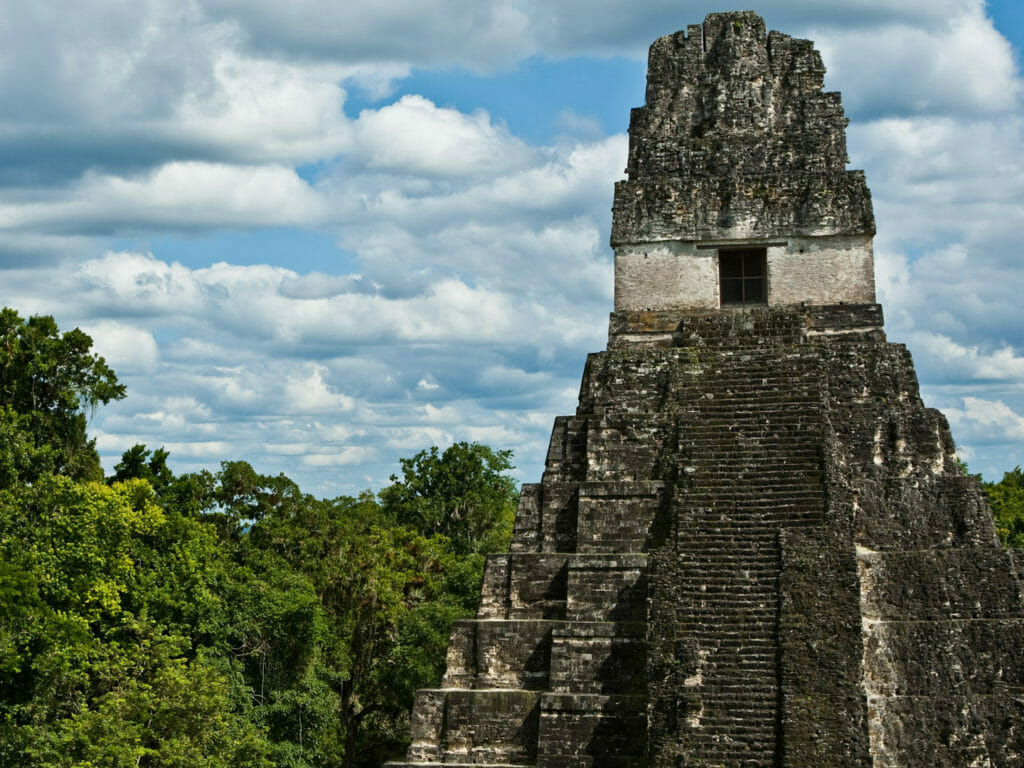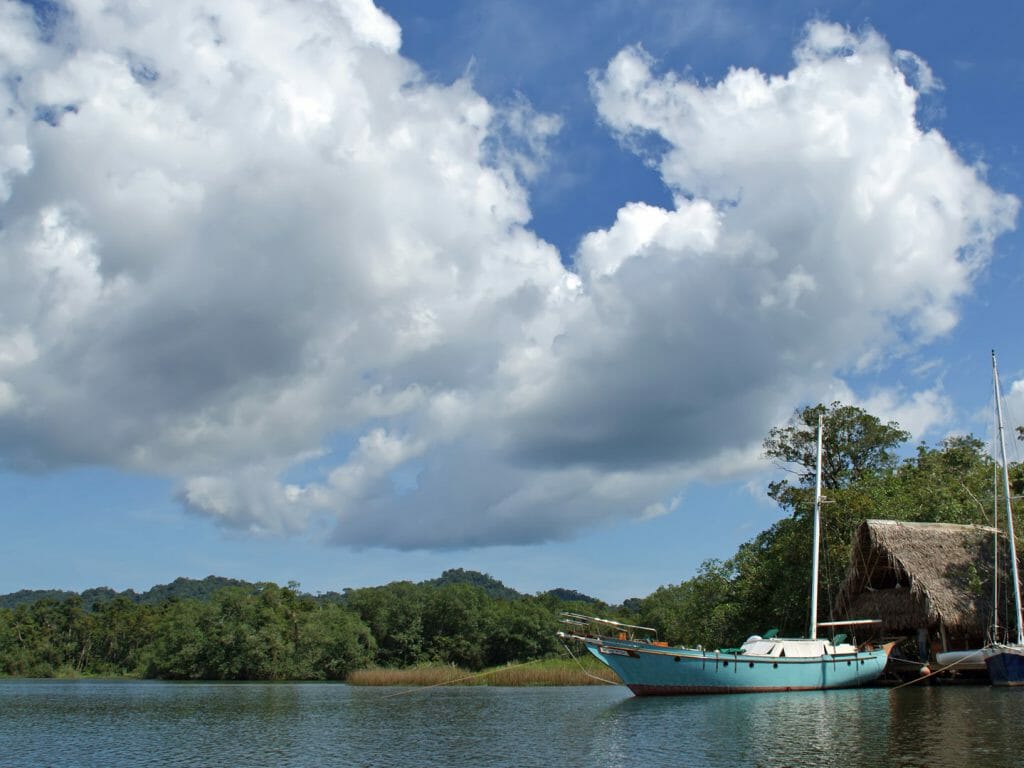“I will wear any brand of clothing but Banana Republic,” quipped my guide. Whilst it was typical of his sense of humour there was also a serious point to his joke. A quiet reference to the way in which his country has been stereotyped over the years.
Yes, Guatemala was embroiled in a civil war for thirty years until 1996 – the late 70s and 80s being its nadir – but with the ending of the war things have improved for the Guatemalans. The literacy rate is a good indicator of this – in 1996 60% of the population were illiterate, today that number has fallen to 13%. Whilst the population has increased substantially – it was nine million twenty years ago and is now fifteen million – there is poverty but not malnutrition. Where once there was uncertainty and insecurity there is now peace and calmness.
My guide Rambo – a name bequeathed to him whilst serving as a captain in Guatemala’s Special Forces – personifies the country and its emergence from civil war. Some twenty odd years ago Rambo participated in two coups and had to flee the country but for the last twenty-five years he has worked as a guide, showing tourists the highlights of his country. There are many.
Guatemala is a small Central American country – about half the size of the UK – that is a kaleidoscope of colour. Everywhere there is colour. From the lush green landscapes of Atitlan to the pastel colours of Antigua, from the flowers in the markets to the floral designs embroidered on the vibrant costumes that many of the Mayan women still wear.
Unlike many Latin American countries, Guatemala still has a large indigenous community – the Mayans make up around 40 per cent of the population. It is this that makes the country so fascinating, not to mention visually arresting. The Mayan way of life remains remarkably untouched by modernity.
In the twelve lakeside villages around Lake Atitlan, the majority of Mayan women still dress in their traditional hand-loomed costumes. Colours and patterns vary according to which village you come from – in one village the women wear red and black stripes whilst in the next-door village blue and purple zigzags might be de rigueur. Or in another, Santiago Atitlán for example, the women’s pale lilac or blue huipils, a sleeveless tunic, are covered in dozens of embroidered birds.
There is colour too in the landscape. Not literally but in terms of how varied and different it is. The volcanoes of Guatemala are an unexpected delight. The startling blue of Lake Atitlan is set against the dramatic backdrop of three enormous volcanoes jabbing at the southern sky: Tomilan, Atitlan and San Pedro. The city of Antigua is cradled by the soaring peaks of the volcanoes Agua and Fuego.
There is certainly colour in Antigua, among the finest examples of colonial architecture in the Americas. I walk the cobblestone streets – the best way to fully appreciate the fabric of the city – and take in the red-tiled roofs, walls of terracotta or Córdoba blue. The buildings are low and massive, a potent symbol of the strength of the Spanish. Thick imposing walls guard the courtyards of colonial houses. I peek through an open doorway and glimpse shade, bougainvillea and jasmine.
There is colour too in the forests – Guatemala means place of forest. From a splash of green of a rare emerald toucan to the bright red head of a woodpecker, from the dazzle of a miniature hummingbird to the giant kaleidoscopic butterflies.
There was once colour – predominantly red – on the myriad Mayan temples that make the northern region of Peten unique and unparalleled. Blasted away by the elements and archaeologists, literally in the case of the latter, the temples and pyramids are more muted than in their prime.
Yet this does not detract from the magic of the experience of visiting the temples. With its countless pyramid-style temples which date back to 200 BC, the historical site of Tikal is world-famous. The temples are awe-inspiring, the views from their summits of the never-ending green almost equally so. The Mayans were an incredible civilisation not least for the fact that the Mayan word cacao means the food of the gods.
There is colour in Guatemalan humour. They like joking about Mexicans: what do you call a Mexican crossed with a Chinaman? A car thief who can’t drive. There is colour in their smiles – that is not a reference to the flash of gold as they smile but the warmth of their smiles.
There is colour in the accommodation. The standard of boutique accommodation is of good quality – quirky and filled with colonial and Mayan antiques. The gorgeous Casa Palopo overlooking Lake Atitlán stands high against the hillside and out in my memory.
Arguably most important of all, there is colour in the guides. Rambo and Carlos remain among some of the best guides that I have been lucky enough to meet in my travels. No spouting a litany of dates or facts but rather an intimate and personal view of their country. They are proud of Guatemala. And rightly so.


